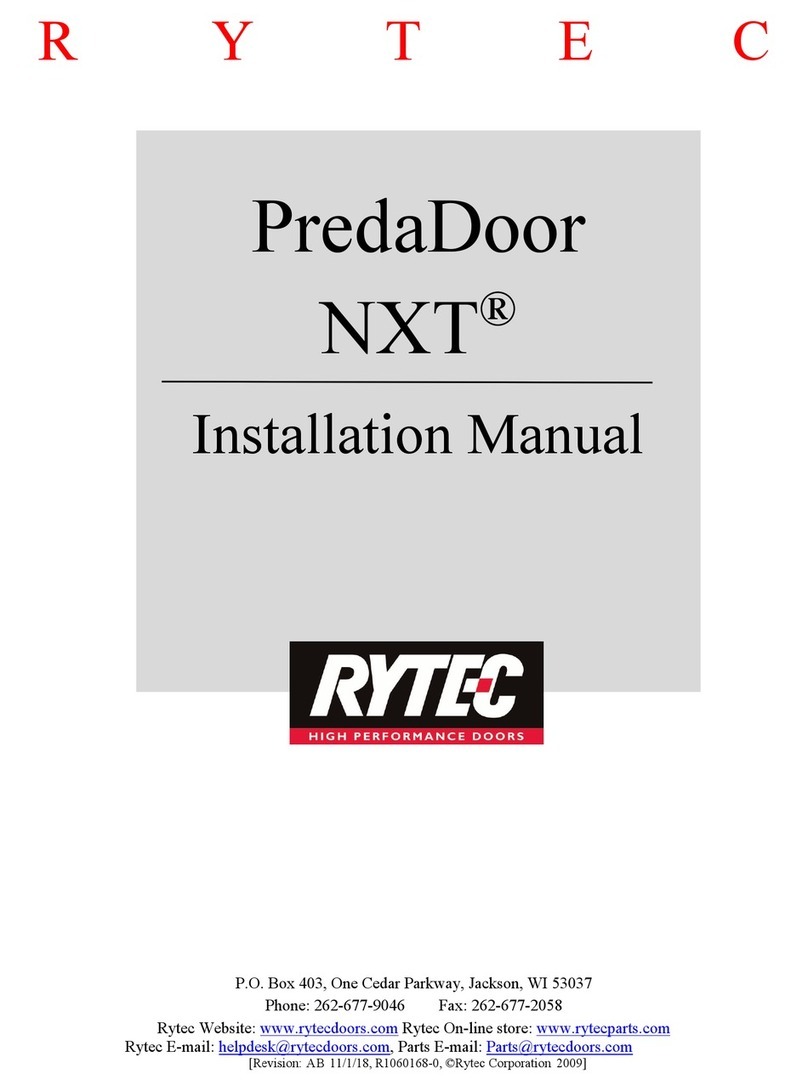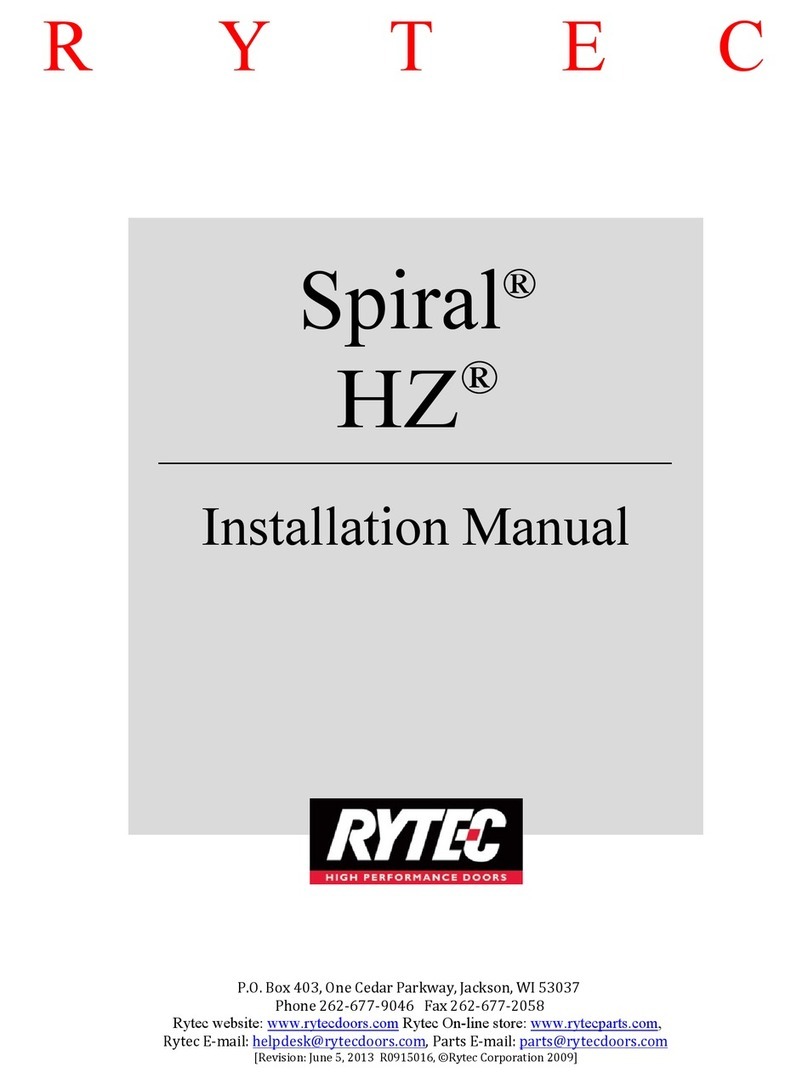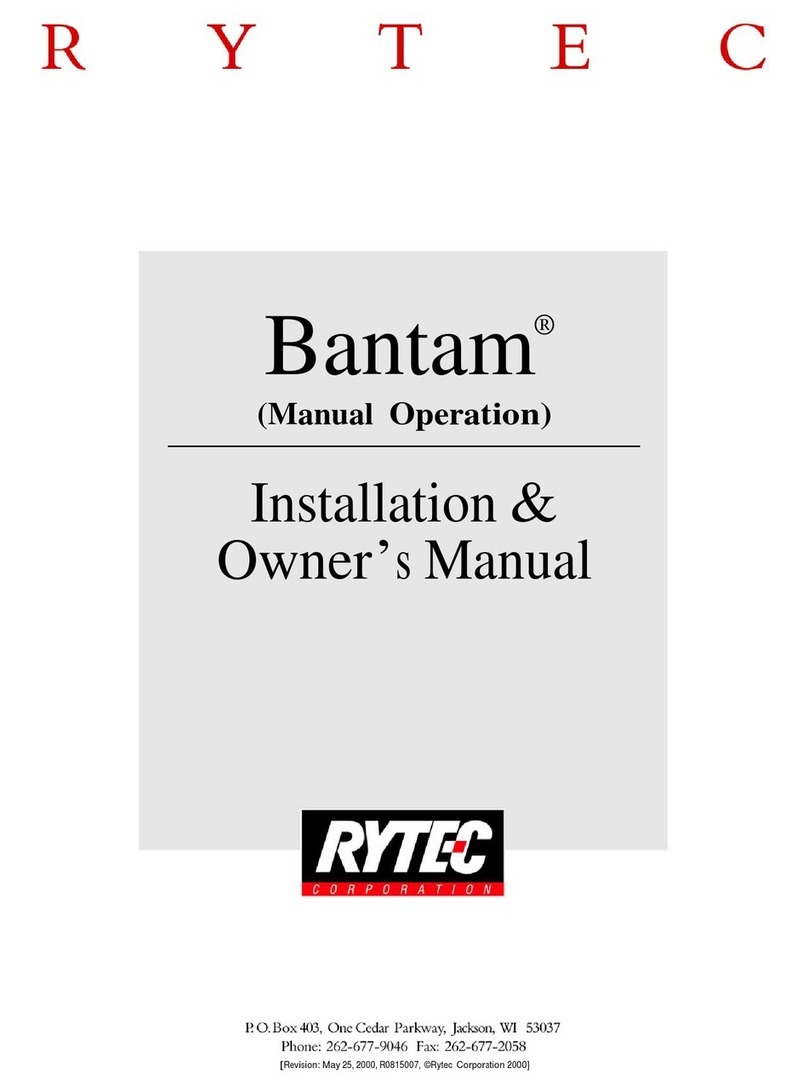
INSTALLATION-MATERIAL, TOOLS, AND EQUIPMENT
2
INSTALLATION
MATERIAL, TOOLS, AND EQUIPMENT
1. Threaded rod
(
¹/₂
-in.
diameter) and other various
wall anchor hardware and material. Concrete
Anchor bolts
(
¹/₂
-in.
diameter). (See
“ANCHORING METHODS” on page
3)
2. Assorted shim stock. (See Figure 10)
3. Double-sided tape (to temporarily hold shims).
4. Carpenter’s or spirit level (4-ft. minimum length).
5. Carpenter’s square.
6. Fish tape.
7. Hammer drill.
8. Masonry drill bit (for
¹/₂
-in.
diameter anchors).
9. Three or four bar clamps (48-in. long).
10. Four 12” C-clamps.
11. Pencil or Marker.
12. Hammer or mallet and blocks of wood.
13. Crowbar or pry bar.
14. Assorted hand tools (pliers, tape measure, etc.).
15. Socket and wrench sets.
16. Water level, line level, or transit.
17. Two ladders (taller than height of door opening).
18. Forklift (see “Forklift Requirements”).
ADDITIONAL REQUIREMENTS
Labor and Site Requirements
1. Two installers.
2. An electrician is required for making all electrical
connections. (See “Electrician’s Responsibilities”)
NOTE:All electrical work must be performed
in accordance with local, state, and all
applicable building codes.
3. 100% accessibility to the door opening during the
entire installation process. No traffic should be
allowed to pass through the opening while the
door is being installed.
Forklift Requirements
A forklift supplied by the customer, dealer, or installer
is mandatory for the safe and proper installation of
this door. The forklift should have:
•4,000-pound lift capacity.
•minimum height ability — door height plus 18 in.
•side-shift capability (desired).
Electrician’s Responsibilities
For complete details on the responsibilities of the
electrician, refer to the Rytec System 4 Drive &
Control Installation, Owner’s Manual, & Door Specific
Electrical Schematic.
1. Install fused disconnect and Rytec control panel.
(See Figure 2 for typical installation)
2. Install all necessary conduit tubing.
NOTE: Separate conduit must be run for high and
low voltage wiring.
3. Run electrical power lines to disconnect.
4. Run power lines from disconnect to control panel.
5. Run power lines from control panel to junction
box(s) and door.
6. Run power lines from control panel to door motor.
7. Run low-voltage cables from control panel to
door.
8. Wire low-voltage safety devices and activators (if
used).
Run high and low voltage wires/cables in separate
metal conduit to the bottom of the System 4 control
panel.
All wires/cables must be cut to length. DO NOT leave
excess wire/cable loops on the door or in the control
panel. Excess wires/cables can cause problems.
Fill-In Material Requirements
Some
applications
may require the use of a door pullout
(extension) to gain clearance of an existing obstruction
between the door and the door opening. The following
materials can be used to fill the space or gap between
the door and the door opening.
1. 16-gauge hot-rolled sheet steel.
2. 2-in. x 2-in. x
³/₁₆
-in.
angle iron.
3. Insulated panels.
NOTE:If any pullout or build out is used in
the installation it must be insulated to
prevent frost and ice buildup on or in the
door. Failure to properly insulate the
pullout can affect the operation of the
Sure-Seal door.
It is very important to seal and caulk
around the pullouts to prevent frost and
ice buildup.































